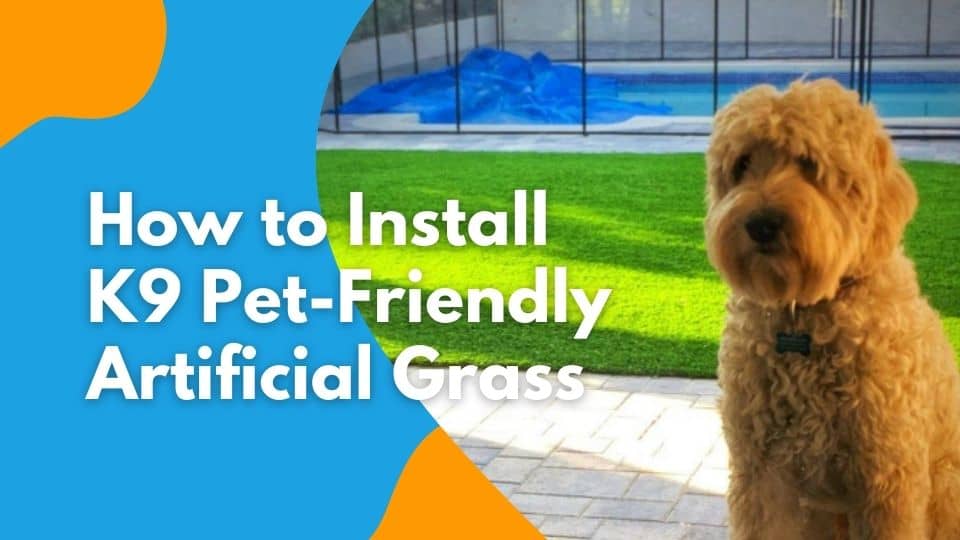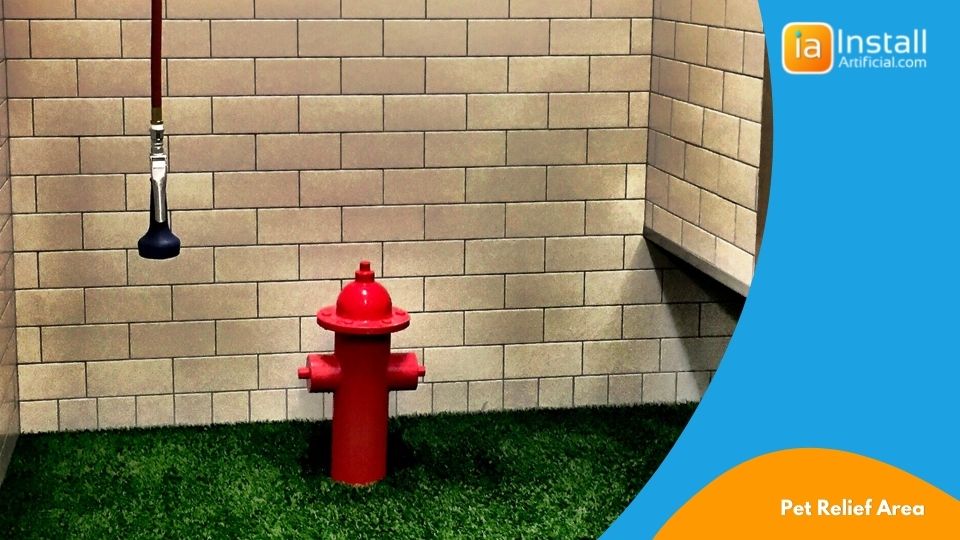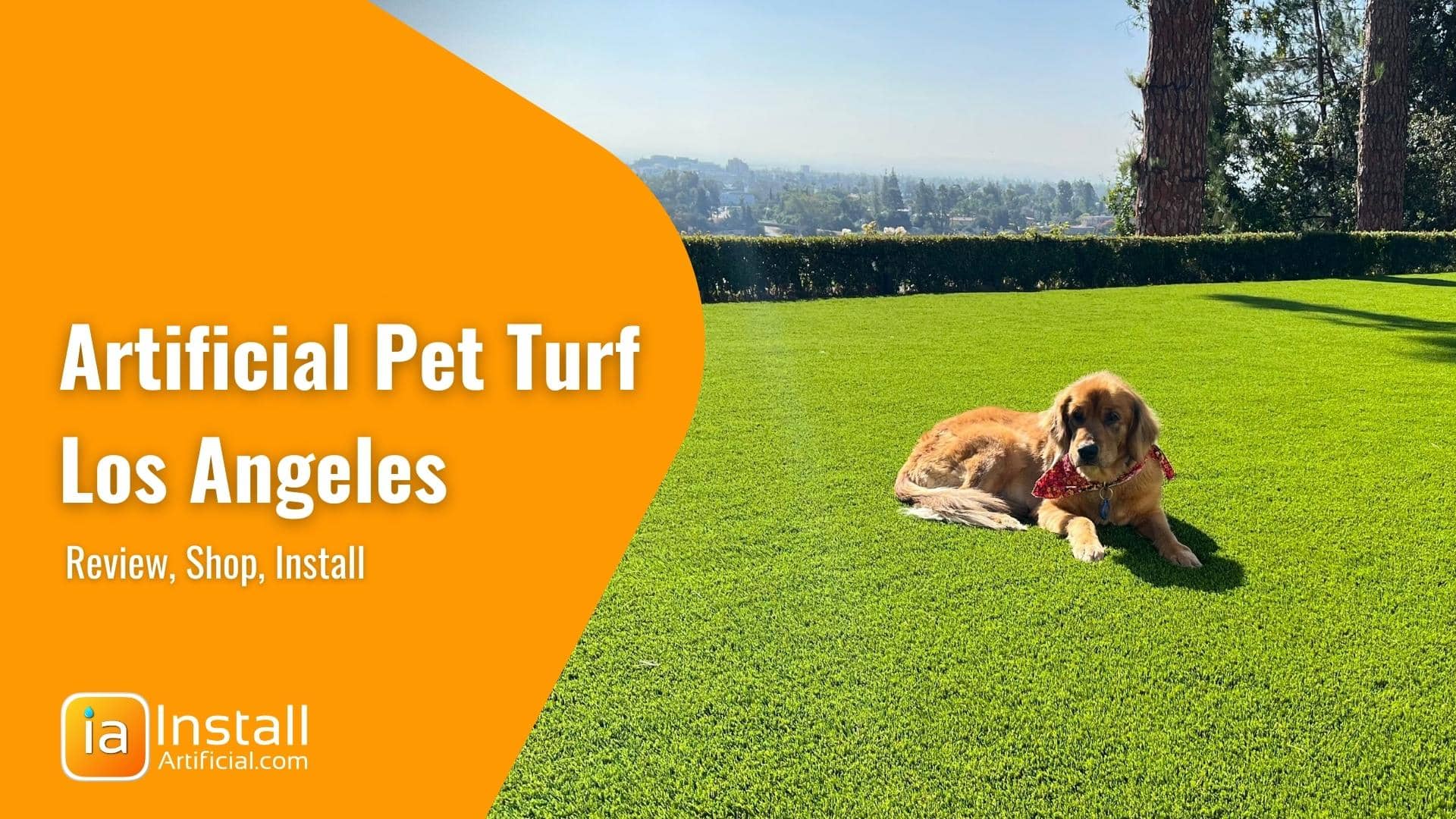
Learn how to install K9 pet turf artificial grass systems for dogs. Discover the best and most used approaches to proper pet turf drainage, and why it's so necessary....
More than half of our artificial grass projects are created with pets in mind. Artificial lawns for dog owners are among our most common installations. Find out what leads to odor in these lawns, and how we prevent it through our pet-friendly amenities.

The smell is not caused by urine itself, rather it is caused by ammonia and bacteria found in urine. Ammonia evaporates when properly ventilated but bacteria flourish in the shade, fed by moisture and a warm climate that is typical for coastal zones. Most often, the smell will originate from under the turf, where it is the most difficult to clean.
To meet your budget, we offer a few different options. To get an idea of the price of each of these systems, request a custom estimate in 2 minutes or less and keep reading below to learn more!
This is one of the most affordable and popular solutions. If your dog only occasionally goes to the bathroom on the lawn, you can rinse the area down afterward. This is most popular in front yard turf applications as they're less often used as a relief area for pets. To make this work, we eliminate the weed barrier layer because it holds bacteria, and then we lay a turf deodorizer down underneath the surface. We also use an antibacterial sand infill to stop bacteria growth at the surface. Although this is cost-effective it requires consistent rinsing.
Turf Deodorizer: Turf deodorizer is made of lightweight, sharp, and abrasive small stones that absorb urine and trap ammonia inside. This reduces the initial smell until the turf is first flushed out with a hose. Turf deodorizer does not fight bacteria nor it does not help to ventilate the surface, but it helps prevent odor build up over time.
Antibacterial Sand: Antibacterial sand infill will help prevent and fight bacteria growth on the surface. Also, antibacterial sand's granules have a plastic-like coating making it non-abrasive and ideal for recreation and pets.
With our full pet turf system, you get both the antibacterial sand and turf deodorizer from above but also there is a layer of drainage beneath the surface to ventilate and accelerate drainage. This 1 in. grid creates an air void between the synthetic grass and the ground to ensure that the entire space is being flushed out during cleanings to prevent odor and bacteria growth. This is most often used in backyards and spaces that are consistently used as an area for pets to use the restroom. Without adequate drainage and consistent sanitizing, artificial grass that's being inhabited by dogs won't last.
This area is designed to be used for pet relief only, is usually up to 50 feet in size, and is completely washable. Cleaning in this space is fully automatic with a chlorine-enabled wash system. Relief objects, such as a fake fire hydrant, will help minimize water use because the area will be much smaller. This system is the most hygienic way to keep your backyard clean, however, it requires some training to get your dog used to only using this space to use the restroom.

In our experience, air circulation and consistent water flow are key factors in odor prevention. No matter how great the infill you use is, without consistent sanitizing bacteria and odor will build up. For this reason, it is our recommendation to have a drainage layer to assist with ventilation and accelerate drainage after the area is flushed with water. While artificial grass provides both you and your pets a clean and green space, it must be cleaned often to last long term. To learn about our favorite pet turf cleansers, check out our article on cleaning best practices here!
And there you have it, our recommendations to keep your pet-friendly turf fresh and like new for longer! As always, request an estimate below to start your project with us today!

Why does pet turf cost more than regular turf? What causes pet turf to smell? Find the answers to commonly asked questions about pet turf materials and pet turf...